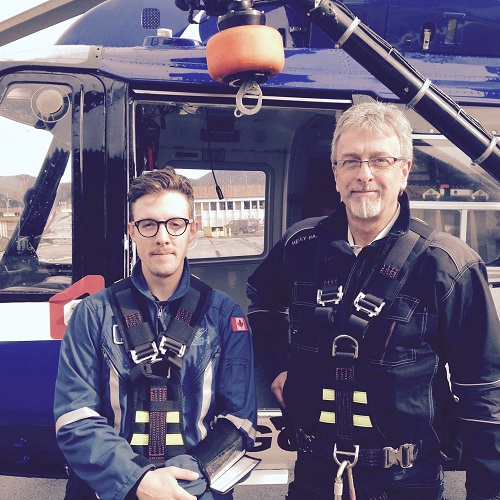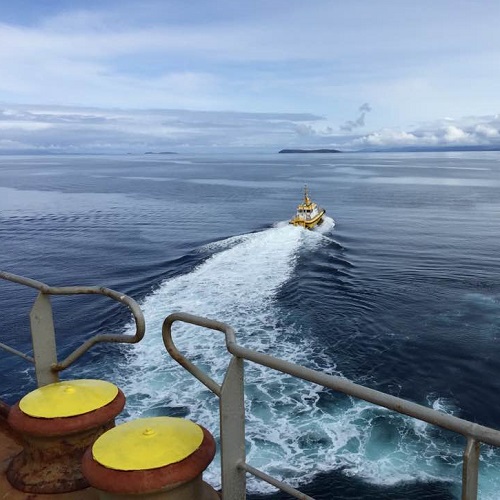Welcome to "Captain's Orders and Pilot"s Advice."
Rule 19
Rule 19 - Restricted Visibility
Operating your vessel safely, in restricted visibility requires complete focus and often nerves of steel. No matter what level of certification you have. To navigate in this very challenging and dangerous condition demands you have a complete and comprehensive knowledge of Rule 19
RULE 19 - Conduct of Vessels in Restricted Visibility
(a) This Rule applies to vessels not in sight of one another
when navigating in or near an area of restricted
visibility.
(b) Every vessel shall proceed at a safe speed adapted
to the prevailing circumstances and conditions of
restricted visibility. A power-driven vessel shall
have her engines ready for immediate manoeuvre.
(c) Every vessel shall have due regard to the prevailing
circumstances and conditions of restricted visibility
when complying with the Rules of Section I of this
Part.
(d) A vessel which detects by radar alone the presence
of another vessel shall determine if a close-quarters
situation is developing and/or risk of collision exists.
If so, she shall take avoiding action in ample
time, provided that when such action consists of an
alteration of course, so far as possible the following
shall be avoided:
(i) an alteration of course to port for a vessel forward
of the beam, other than for a vessel being
overtaken,
(ii) an alteration of course towards a vessel abeam
or abaft the beam.
(e) Except where it has been determined that a risk of
collision does not exist, every vessel which hears
apparently forward of her beam the fog signal of
another vessel, or which cannot avoid a close-quarters
situation with another vessel forward of her
beam, shall reduce her speed to the minimum at which she can be kept on her course.
She shall if necessary, take all her way off and in any event navigate
with extreme caution until danger of collision
is over.
Let’s break it down. What does this rule say? In simplified form it says that you should be going slow enough to assess the circumstances with all available means and respond by immediately slowing down or stopping, if a close quarter or collision is determined.
So, does that mean I can run at full speed and wait to take evasive action? Definitely not! You are required to proceed at a safe speed appropriate to the prevailing conditions (also see Rule 6 SAFE SPEED) so that you can take EARLY avoiding action in plenty of time! In the case of restricted visibility, the rule also says that the best action is to SLOW DOWN or take off all your speed, coming to a complete stop.
Can I just alter course without slowing down? Yes, under the condition that you have visual contact or have a radar, know how to use it and have determined, by radar, that your action will not cause another situation, and is not an alteration to port. Most vessels on the lake do not have radars and I would guess that those who do, are not trained to use it for collision avoidance. So, the expected action for vessels is to slow down and if necessary, come to a complete stop.
In answer to our question posted on our facebook page “who has the right of way?” The answer is “NO one has the right of way.” Period. Remember that the next time you are in, or NEAR, an area of restricted visibility. This is the critical component of Rule 19!
In complying to this rule, what are “all available means” in determining if a close quarters or collision exist? They are sight, hearing, radar and others that do not generally apply to pleasure craft (AIS). Sight being the least effective, radar being the most effective and hearing being your best detection on the lake! Ideally everyone is using the sound signals? Right? Unfortunately, the reality is no. This is usually completely ignored. Yet it is critical to your safety and others. The further away you hear the signal of another vessel the better you can determine the risk as it develops.
One long blast not more than 2 minutes apart for a power boat underway and two long blasts for the same boat that is stopped. Learn it, use them and don’t forget them! It might save your life one day. There are other sound signals that are relevant to restricted visibility, and you should brief yourself on them too. They are less common, but you never know.
It can not be understated, the importance of knowing and obeying rule 19. Our area is prone to restricted visibility at any time of the year. Low cloud, fog and smoke all qualify as restricted visibility. Backlight can also be considered restricted visibility. Your best bet is to avoid boating in these conditions if at all possible. Your chances of surviving a collision in these conditions is severely reduced.
Comments? Questions? Critique?
Join us on our Facebook page to comment question or critique our blogs. While you are there, like and follow us for all our thought provoking insights and advice on baoting.
Click here to go to our Facebook Page






